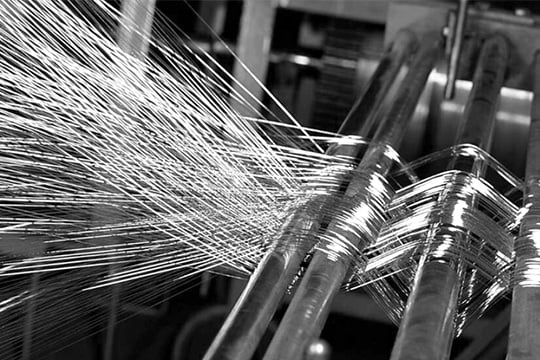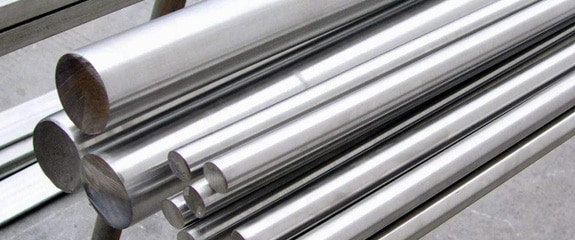Understanding Woven Wire Mesh: Wire Drawing
What would you say if we asked you what woven wire mesh is? If you ask us, we would reply that it is whatever you want it to be, knowing that it is a material constant of pore openings that are precise and uniform.
Woven wire mesh is created using a series of individual wires that are interlocked together using a centuries-old weaving technique that is similar to the weave methods used to develop various fabrics. While the stringent standards that surround this weaving process play a key role in delivering the accurate characteristics wire mesh are known for, one must also take the time to appreciate the wires as they too affect the mesh's performance.
This is why it is critical to understand what wire drawing is and how it is conducted.
W.S. Tyler has manufactured and supplied woven wire mesh for over 140 years, so it's safe to say we are wire mesh. We strive to pass the knowledge and experience on to customers such as yourself so that you, too, know the ins and outs of wire mesh.
And with that, we wrote the following article to provide insight into wire drawing in the world of woven wire mesh and will include:
- What Wire Drawing Is
- How wires are drawn
- The impact accurate wire drawing has on woven wire mesh performance
What Is Wire Drawing?

Wire drawing is the process in which a metallic wire is pulled through one or several drawing dies to reduce the wires' diameter. That said, while the diameter of the wire is reduced, its volume is unchanged.
This means the wire's length increases.
Now, it should be noted that a single wire typically goes through several drawing dies. This is because it must be gradually reduced using smaller dies to reach the desired size without compromising the integrity of the wire.
How to Draw Wires
When drawings wires that will eventually be woven into wire mesh, the wire drawing process typically starts with a spool of 5.5mm(.216") diameter wire. The wire is treated to remove any scales on the wire's surface.
At this point, one end of the wire is then shrunken to fit through the die. The wire is then pulled through a die, at which point the granular structure of the wire is elongated.
As stated above, there are instances in which the wire must be redrawn to meet the desired wire diameter. If the area reduction exceeds 50%, odds are the wire will need to undergo an annealing process prior to any additional drawing processes.
By annealing the mesh, its ductility is increased while its hardness is reduced.
After it has been annealed, the wire can then be run redrawn through dies that get gradually smaller until the desired wire diameter is achieved. Once complete, the drawn wire is wound onto a spool for shipment.
Why Is Wire Drawing Important to Woven Wire Mesh?
As stated above, wire drawing is the process that controls the overall diameter of the wire. The wire diameter is an integral mesh specification, whether weaving wire mesh for test sieves, filters, or another form of screening media.
This is particularly important as the wire diameter used throughout the mesh dictates how strong the mesh is under various conditions. Typically, the rule of thumb is the thicker the wires, the more durable the mesh.
But it's important to know that fine-tuning the wire diameter of your mesh is key to obtaining the results you want.
For instance, if you were to use wire mesh screen sections to screen coarse aggregate, you would want to use a thicker wire. Using too thin of a wire diameter may result in damaged mesh, ultimately hindering your ability to accurately screen your material.
On the other hand, if you are running fine particles, such as confectionery sugar, through a test sieve stack, you will want to make sure the wire diameter is not too thick. If the wire diameter is too thick, the openings may be too small, causing the particles to plug the openings.
Get To Know The Other Key Mesh Specifications
Wire drawing is a process used to reduce the diameter of a raw wire to a size that can be woven to accommodate various wire mesh speciations. Not only is this key to delivering accurate screening/filtering performance, but to the mesh's durability and longevity as well.
If you remember, we said that the wire diameter that comes from the ire drawing process is just one of three primary mesh specifications that are key to the performance of woven wire mesh. The mesh opening and micron rating are just as important to understand as they too can make or break the performance of your mesh.
Having helped customers navigate the world of woven wire mesh for over 140 years, W.S. Tyler is here to guide you through the road of understanding, designing, and implementing the ideal wire mesh solutions that you feel confident in.
To continue projecting you through your journey, we have written the following article to break down the three key mesh specifications that drive the wire mesh industry:
About Ronnie Brown
Ronnie is the Content Writer for W.S. Tyler and has four years of experience as a professional writer. He strives to expand his knowledge on all things particle analysis and woven wire mesh to leverage his exceptional writing and graphic design skills, creating a one-of-a-kind experience for customers.




